Today you’ll learn how to make homemade potting soil using only three simple ingredients. I’ll also give you alternate recipes for potting soil in case you don’t have those three readily available.
My Homemade Potting Soil Recipe
If you’d like to see me make my homemade potting soil, here’s a video I created illustrating the process:
First, you’ll need a place to work.
I like to spread a tarp on the grass and use that as my mixing area, but you can work on any solid surface. A tarp is easy to roll back and forth to help you mix, but making potting soil isn’t rocket science and you can really do it anywhere.
Second, gather your materials. My potting soil recipe has three main ingredients:
1. Rotten Wood
Fresh wood chips will eat up a lot of the nitrogen in your potting soil mix and can cause your plants to struggle. Rotten wood doesn’t cause that issue, plus it holds moisture and provides a loose and airy texture to the mix.
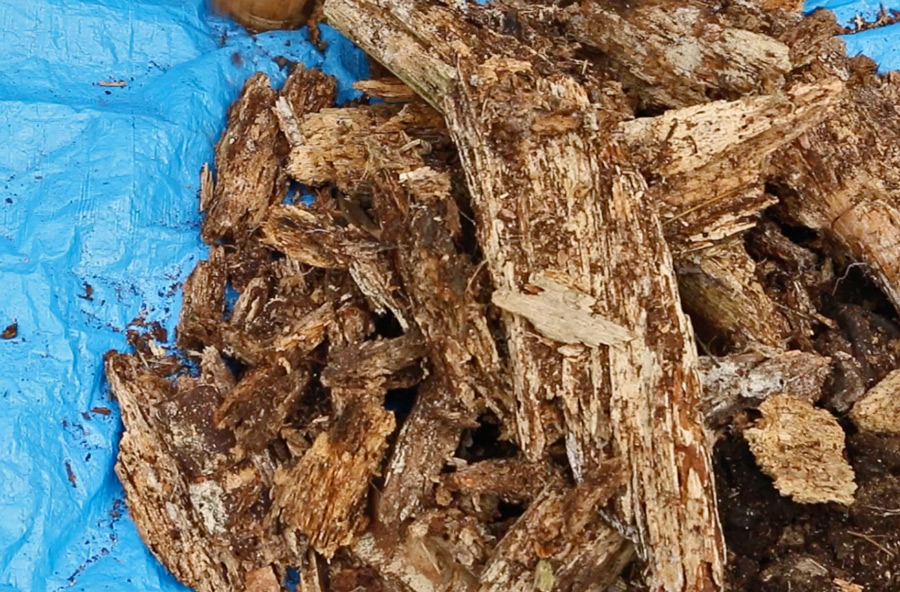
As you know if you’ve ready my popular book Compost Everything: The Good Guide to Extreme Composting, I don’t throw away or burn the logs and sticks that fall in my yard. Instead, I use them to feed the soil.
Leaving a pile of brush and logs in a corner of your property to rot over time will give you a ready source of rotten wood.
If you haven’t started doing that yet, just go for a walk in the woods and get a nice sack of fluffy, crumbly wood and drag it home.
2. Aged Cow Manure
I gather manure from my neighbor’s cows and leave it on a piece of metal in the sun to age for a few months.
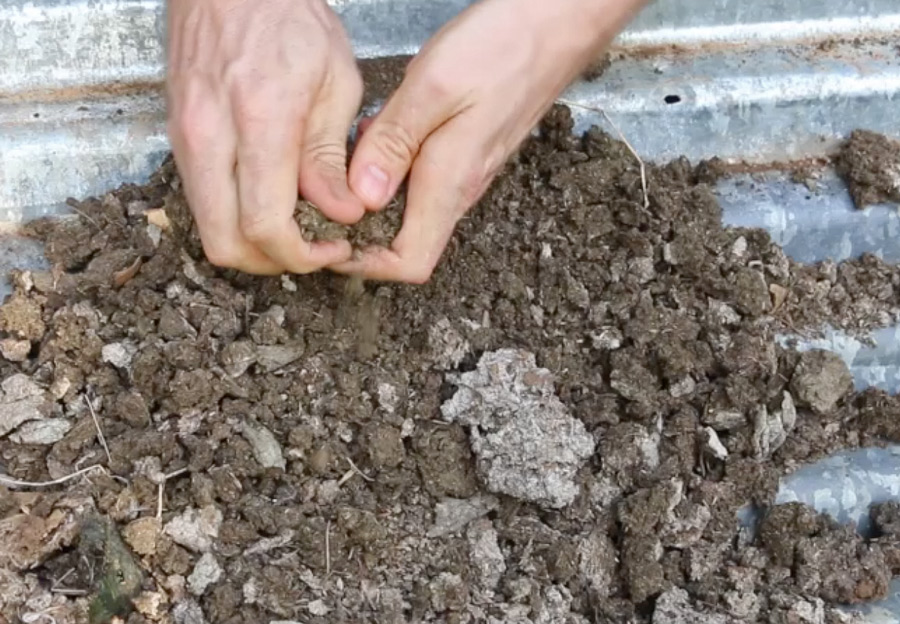
Fresh cow manure is too “hot.”
If my home-baked manure sounds too weird, just pile it up in a compost heap somewhere and let it go for a few months. That will leave you with a nutritious, organic-matter-rich pile of good stuff for your homemade potting soil.
NOTE: Manure in the United States is often contaminated with long-term herbicides that will destroy your garden and your potted plants. Read Karen’s story and learn more about that danger here.
3. Sifted Soil/Grit
I let my chickens do a lot of composting for me, like this:
I go into the coop or chicken run, sift out the grit, soil and compost, then use it in my homemade potting soil.
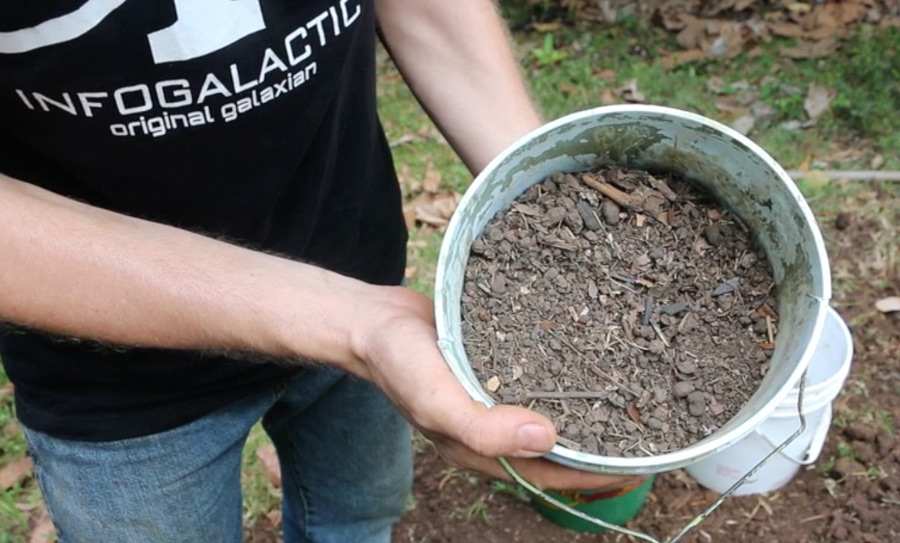
You don’t need to do that, though. No chickens? No problem.
I sift grit from the local creek bed and add that sometimes. I’ve also just added good garden soil, old potting soil mix from expired plants and even regular old sand.
Mix It All Up
Now all you need to do is get mixing.
Smash the rotten wood into smaller chunks, break up the cow patties, and pour in the grit. I use one part rotten wood, one part aged manure and one part grit/soil in my potting soil recipe, but don’t overthink it. If it looks loose and feels good, the plants will be happy.
As you’ll notice in my video, I often leave pretty big chunks of wood in my homemade potting soil. The potted plants seem to like them and they act as moisture reservoirs and soil looseners.
If you need a finer homemade potting soil for starting seeds, just crush the mix finer or run a coarser mix through some hardware cloth to sift it.
Alternate Ingredients for Homemade Potting Soil
If you don’t have cow manure, try goat or rabbit manure. Both work quite well. Homemade compost is also excellent, though I never seem to have enough for everything I want to do.
Don’t have grit/sand available? Vermiculite or perlite both work nicely, though you have to buy them.
Rotten wood can be replaced with peat moss or coconut coir. I prefer the coir. It seems to repel water less. You can also use leaf mould. Sift it out in the local forest – it’s wonderful.
Along with these ingredients, I’ve also added some ashes, crushed charcoal, coffee grounds, old potting soil, peanut shells and even moldy cocoa nibs.
When I ran my nursery business I often stretched my potting soil budget by mixing purchased soil with rotten wood chips I got from a local tree company and set aside for years to break down.
Just keep your homemade potting soil loose and fluffy with a good mix of ingredients and your plants will do great.
Did you enjoy this article? Share it! Here’s a Pinterest graphic:
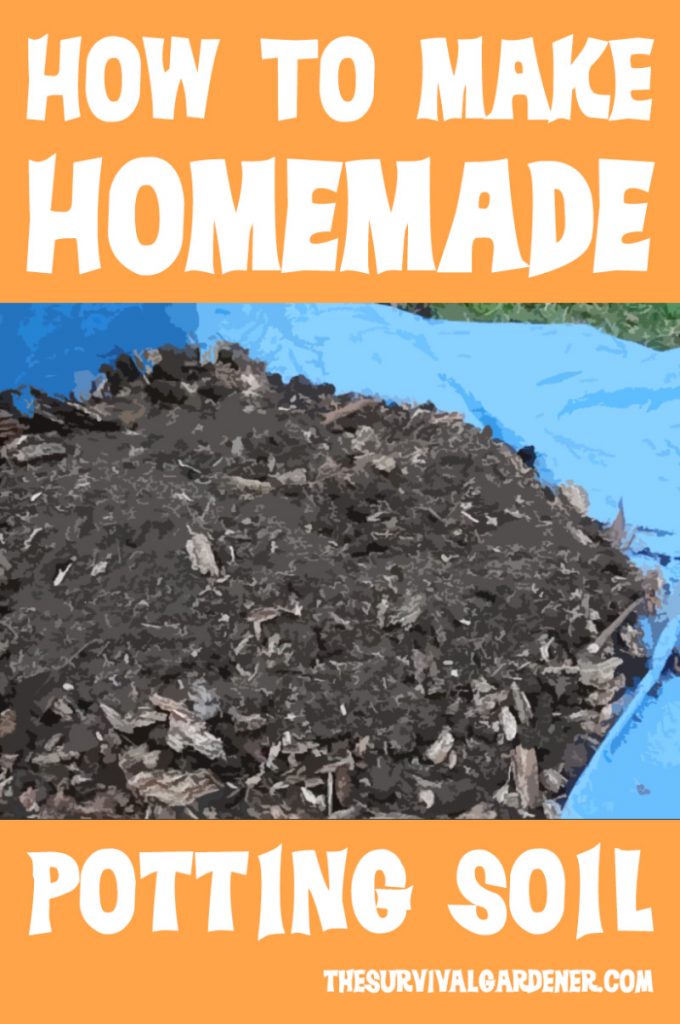

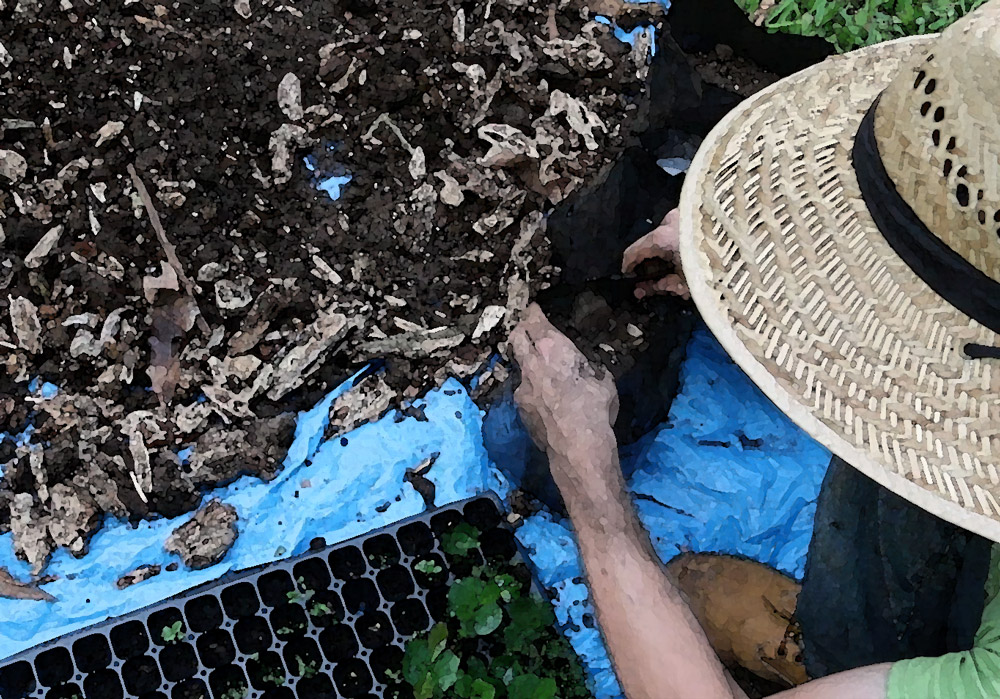
12 comments
I like potting soil . Making idea I like I can do
Thank you, Chandra.
I am three months before PDC student. I interested to soil and seed collection .
Love your style man! Using purchased ingredients as “plan B or C” – I can really dig that. Caused me to remember that I have two huge piles of rotting logs left over from clearing before our home construction. Now I realize I have two gold mines – just have to cut a path through the black berries to find them. And to think that our sheep can also make contributions! I am pretty passionate about not wasting anything, so this is right up my alley. Wow, my next soil blocks are going to be dirt cheap! Great post. Keep on shoveling out the practical stuff. You are doing the whole world a huge service. (It might take a while for the whole world to catch on – but right after the mother of all solar flares, you are going to be in high demand – so just hang in there, buddy.)
Marvy! I have to do everything in a big way so I’d roll my low wheeled cart in there, cover the whole thing with hardware cloth and get more faster. Then roll to the gardens and scatter. My chickens are free range but like to noodle around one area, so I’m headed over there. Great fun and ideas – thanks!! From Ruskin:)
Oh, and I have your books. You are HILARIOUS!!
You will probably be the one person that can appreciate this – I live in the woods of north Georgia, and there are a lot of deer on my property. I go through the trails from time to time with a shovel and wheelbarrow and scoop up the poop(along with some nice leaf mold) and add it to the compost. My garden is small but happy!
I love your posts and your books!
Marie, you are my kind of gardener. Thank you.
I agree with the aged wood. Excellent stuff. But it has to be kept moist and away from evaporation. As this allows mycilium to colognise the wood from the ground. It’s the presence of mycilium which makes the aging wood act like a sponge. So if the potting mix is ever allowed to dry out, the effects of the mycilium will leave, causing the mix to become hydrophobic again.
I liked your idea about adding biochar to the mix (another video) as you were stretching your purchased soil supplies, further. But I do believe the aged wood, may provide more beneficial qualities for retaining water.
Another good animal manure supply, is the humble guinea pig. Ours live on shaved wood, and we change it every month or so. I’ve been adding it to my soil mix, to make it go further. Although, it could probably benefit from a bit of aging, as the wood shavings tend to be fresh. I enjoy seeing how others go about potting culture. There’s so much to learn.
[…] Or, you can be like Grow Network, Change Maker, David the Good and make your own! […]
I love your ideas. The thing I can contribute is to add worm castings to the potting mix. Not many are needed to make it nice and rich as well as fluffy. The castings probably have worm eggs in them so it encourages those mightly mini composters to work in each and every pot.
I’ve been makeing a mix I learned from John Jeavons. It is 1/3 compost 1/3 perlite/vermiculite mix and 1/3 good garden soil all strained through a wire mesh to make sure its loose and uniform. I add a cup or so of castings to the tub . Or about 2-3 gallons.
Now I’m going to look for rotting wood to replace some of the store bought “ites’
Dear David , Being a smaller woman , I throw all my ingredients into a small home cement mixer and then pour it out onto a tarp. I too collect wild rabbit and deer poo in an old five gallon bucket while I collect Chanterelles from the woods into a basket. I do lazy gardening. I just layer old sticks and logs on the bottom of a future bed and then layer shredded junk mail , fall leaves and veggie scraps and top it all with wood chips from the utility company. Then I put scrap chicken wire on top to discourage the Armadillos .After a winter it is ready to plant and full of earthworms etc.. Monster plants grow there and it is mostly free!
I’m making some potting soil and trying some 1/4” sized pieces of biochar in place of the vermiculite. I bet it will work similarly if not better because of the added nutrient retention
Comments are closed.